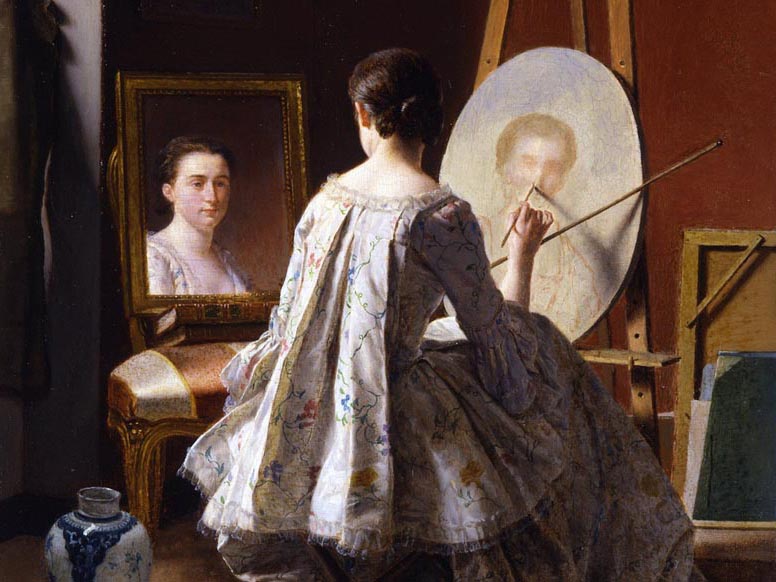There's a story from the earliest days of cinema that seems applicable to Sora,Watch Big Breasts Overflowing With Hands, The Wifes Runaway Online the text-to-video creation tool launched by OpenAI this week. And given that Sora's servers are struggling with demand, with many OpenAI subscribers still waiting to try it out, we've got time for stories.
You probably know of Arrival of a Train at La Ciotat Station (1896) by the Lumiere brothers, even if you've never seen it. Like Sora, the Lumieres created very short movies that showcased the latest tech. We're talking cinematograph rather than AI rendering, and a luxurious 50 seconds of film rather than the maximum 20 seconds allowed in Sora videos.
Still, it's the same principle: This was an early peek at a shockingly new form of entertainment. According to legend — a legend cemented in Martin Scorcese's charming movie about a boy in the Lumiere era, Hugo(2011) — Arrival of a Trainaudiences ran in terror from a steam engine that appeared to be heading straight for them.
A similar sense of panic clings to Sora — specifically, panic about what AI videos might do to further crack up our "post-truth" media landscape. The average viewer is already having a hard time judging what is real and what isn't, and the problem is worse if they're depressed. We're living in a golden age of conspiracy theories. The world's richest man already shared an AI deepfake video in order to help swing an election.
SEE ALSO: Could an AI chatbot talk you out of believing a conspiracy theory?What happens when Sora can make anyprompt look as real as something you might see on the evening news — ready-made to spread on social media?
OpenAI seems to think its watermarks, both visible and invisible, would prevent any shenanigans. But having downloaded dozens of Sora videos now, I can attest that the visible watermark is tiny, illegible, and fades into the background more often than not. It would be child's play for video editing software to clip it out altogether.
So a world of deliberate disinformation, either from bad political actors or influencers trying to gin up their engagement, is barreling down on us like a train. Right?
Wrong. Because as the actual story of the Lumiere movie tells us, humans are actually a lot smarter about new video entertainment than we give them credit for.
Here's the thing about Arrival of a Train: the legend is almost certainly wrong. We have zero first-hand evidence that audiences fled the cinema, or even flinched when they saw a train approaching in a 50-second clip.
Media studies professor Martin Loiperdinger calls the panic tale "cinema's founding myth," and notes it can be traced back to books written in the second half of the 20th century. It's possible that authors conflated it with the Lumieres' later experimental 3-D version of Arrival of a Train, which screened a handful of times in 1934 and was — like a lot of 3-D movies to come — a novelty, and a commercial failure.
So no, early audiences likely did not confuse a moving image of a train with a real train. Rather, they seem to have adapted to the whole concept of movies very quickly. Contemporary accounts of the Lumiere shorts (of which there were dozens; Arrival of a Trainwas not seen as a stand-out) are filled with excitement at the possibilities now unlocked.
"Why, if this continues," wrote one newspaper, Le Courier de Paris, in 1896, "we could almost overcome memory loss, almost put an end to separation, almost abolish death itself." (Spoiler alert: we did not, although that sounds like a great premise for a 19th century Black Mirrorepisode.)
Another periodical, La Science Francais, enthused about the "most unbelievably wonderful sorcery" that had created the cinematograph's "hallucinatory phantasmagoria." Even today's most tech-happy AI boosters would have a hard time endorsing Sora in the same terms.
Because like most AI, Sora is often "hallucinatory" — and not in a good way.
SEE ALSO: 7 wild Sora videos blowing up social media after its launchAs I discovered in the moments that OpenAI servers weren't slammed, almost every Sora-generated video has some detail that looks wrong to human eyes. I typed a prompt for "journalist slams desk in frustration at not being able to access AI videos," then noticed a pen that appears and disappears in the journalist's hand.
The mistakes went on and on. The novelty factor diminished fast. Friends were amused and a little freaked out by the realness of the swag in "hip-hop artist models a cozy Christmas sweater" — until we spotted that the rapper's gold chain had become a gold pony tail at the back, and the reindeer on the sweater had eight legs.
Sora's response to "a funeral mass with circus clowns" pretty much nailed the prompt ... except that the colorful-wigged, red-nosed figure in the casket was missing his body.
That's not to say Sora won't have an immediate impact on the moving image industry. Given less outlandish prompts, it could certainly replace a lot of the generic B-roll often seen in YouTube explainers and corporate training videos. (That's assuming OpenAI isn't going to be forced to cease and desist training Sora on internet video footage without the makers' permission.)
It isto say that there's a significant barrier to entry when it comes to creating videos featuring anything unusual, anything you're trying to lie about, anything that Sora hasn't been specifically trained on. Rooting out all those mistakes, to the point where we won't immediately notice, can be an exercise in frustration.
And perhaps these early mistake-filled AI videos will serve as a kind of mass inoculation — a small dose of the post-truth disease, one that effectively gives our brains AI-resistant antibodies that can better prepare us for a future epidemic of visual fakes.
I'm certainly less impressed with AI after I prompted Sora for a new take on the Lumieres' Arrival of a Train.I asked for a video where a locomotive doesactually break through the projection screen at the end, crushing the cinematograph audience.
But Sora couldn't even access the original 50-second short, which is wayout of copyright and widely available online (including a version already upscaled by AI). It hallucinated a movie called "Arrival of a tal [sic] train," apparently released in the year "18965."
As for breaking a literal fourth wall, forget about it: despite multiple prompt-rewording attempts, Sora simply couldn't grok what I was asking. The projection screen remained intact.
Still, this version of Sora may still be a harbinger of some terrifying visual fakery to come — perhaps when more robust AI video tech falls into the hands of a future D.W. Griffith.
Two decades passed between Arrival of a Train and Griffith's infamous movieThe Birth of a Nation (1915)— the first real blockbuster, a landmark in the history of cinema, which also happened to be a skewed take on recent American history stuffed with racist lies.
Griffith's movie, protested at the time by the NAACP, was hugely influential in perpetuating segregation and reviving the Ku Klux Klan.
So yes, perhaps Sora's release is slowly nudging us further in the direction of a fragmented post-truth world. But even in an AI-dominated future, bad actors are going to have to work overtime if they want to do more damage to society than the cinematograph's most dangerous prompts.
Topics Artificial Intelligence OpenAI
 Instant Pot Duo Plus deal: $69.99 at Amazon
Instant Pot Duo Plus deal: $69.99 at Amazon
 Can Poets Save the Parks? Well … Maybe.
Can Poets Save the Parks? Well … Maybe.
 The Day Antonioni Came to the Asylum (Rhapsody)
The Day Antonioni Came to the Asylum (Rhapsody)
 “Genesis,” a Poem by the Late Geoffrey Hill
“Genesis,” a Poem by the Late Geoffrey Hill
 They met on Tumblr, and their relationship outlasted their accounts
They met on Tumblr, and their relationship outlasted their accounts
 Is This the Ugliest Color in the World?
Is This the Ugliest Color in the World?
 Who owns the rights to your face?
Who owns the rights to your face?
 Dentist Poem
Dentist Poem
 Preorder the new Anker Soundcore Sleep A30 earbuds with ANC for $159
Preorder the new Anker Soundcore Sleep A30 earbuds with ANC for $159
 How the Internet Makes Memoirists of Us All
How the Internet Makes Memoirists of Us All
 Golden State Warriors vs. Los Angeles Lakers 2025 livestream: Watch NBA online
Golden State Warriors vs. Los Angeles Lakers 2025 livestream: Watch NBA online
 Habitat for Humility: Voluntourism in Lesotho
Habitat for Humility: Voluntourism in Lesotho
 Intimisms: “Psychologic Poetry in Painting”
Intimisms: “Psychologic Poetry in Painting”
 A free IRS tax
A free IRS tax
 ChatGPT has gone down the day after Christmas
ChatGPT has gone down the day after Christmas
 Bill Berkson, 1939–2016
Bill Berkson, 1939–2016
 A physicist became a viral troll by saying a slice of sausage was a star. He later apologized.
A physicist became a viral troll by saying a slice of sausage was a star. He later apologized.
 Best Anker deal: Anker 747 power bank is under $100
Best Anker deal: Anker 747 power bank is under $100
 Apple's newest ad makes a haunting plea to take climate change seriously
Apple's newest ad makes a haunting plea to take climate change seriously
 Is This the Ugliest Color in the World?
Is This the Ugliest Color in the World?
Promiscuity Is a Virtue: An Interview with Garth Greenwell by Ilya KaminskyTove Jansson on Writer’s Block by Tove JanssonNow’s The Time: An Interview with David Amram by Gary LippmanSilicon Valley Hustling: An Interview with Anna Wiener by Pete TosielloThe Wilderness of the Unfinished Manuscript by Sarah M. BroomOur Town and the Next Town Over by Joanna HowardThe Limits of Standard English by David ShariatmadariThe Upside of ‘Brandenburg v. Ohio’The Empty Room by Lucy SanteThe Horsewomen of the Belle Époque by Susanna ForrestOn Nighttime by Hanif AbdurraqibStaring at a Digital Black Hole by Amir Ahmadi ArianStaff Picks: Bas, Beauvoir, and Britain by The Paris ReviewNow’s The Time: An Interview with David Amram by Gary LippmanGoatherd, Storyteller, Master by Brian RansomMotherhood Makes You Obscene by Marguerite DurasErrant Daughters: A Conversation between Saidiya Hartman and Hazel Carby by Saidiya HartmanBreaking the Rules: An Interview with the Astro Poets by Julia BerickA Bridegroom Called Death by Julia BerickStaring at a Digital Black Hole by Amir Ahmadi Arian NASA's rover photo shows water once absolutely gushed on Mars Chery becomes first Chinese automaker to produce cars in Europe · TechNode Samsung invests $15.2 million to expand semiconductor packaging at Suzhou plant · TechNode NASA spacecraft beams back ultraviolet views of Mars Another world in our solar system has lapping seas, scientists say Webb telescope's photo of Saturn looks really weird. Here's why. If an asteroid will truly strike Earth, NASA explains how you'll know Colombia vs. Paraguay 2024 livestream: Watch Copa America for free China’s Zeekr and Lynk & Co chase 1 million annual sales target after merger · TechNode Best Amazon Prime deal: Sign up for five months of free Amazon Music Unlimited Xiaomi unveils new logo for sub Johnson & Johnson China begins layoffs amid global reduction of firm’s workforce · TechNode Afghanistan vs. Bangladesh 2024 livestream: Watch T20 World Cup for free Watch 'Love Island UK' season 11 in the U.S.: Streaming and VPN deals Fans are harassing 'House of the Dragon' actor Fabien Frankel online Chinese startup releases solid ChatGPT is ableist toward applicants with disabilities, new study finds The Dr Disrespect allegations and fallout, explained Albania vs. Spain 2024 livestream: Watch Euro 2024 for free Microsoft launches Tencent App Store Zone in Windows Store for Chinese users · TechNode
2.4542s , 8255.6796875 kb
Copyright © 2025 Powered by 【Watch Big Breasts Overflowing With Hands, The Wifes Runaway Online】,Wisdom Convergence Information Network